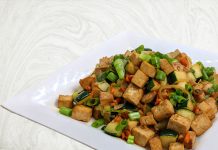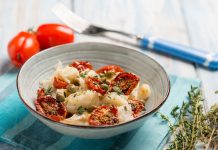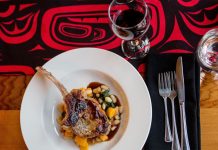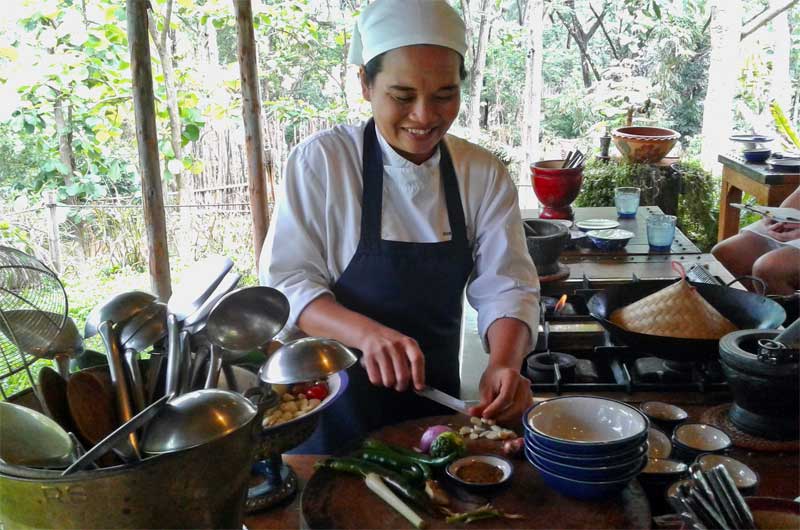Discover Rim Tai Kitchen’s mouth-watering delights. Why the epicurean experiences are so enriching in this breathtaking resort.
Our group had just returned to the Four Seasons Resort Chiang Mai after a fascinating tour of Thanin market. At Rim Tai Kitchen, chef Rossukon Tagoporn was busy prepping for our Thai cooking class.
With time to spare before my lesson, I headed to the Rim Tai Kitchen dining pavilion where a lavish breakfast spread of local and western fares provides an unforgettable feast for the senses.
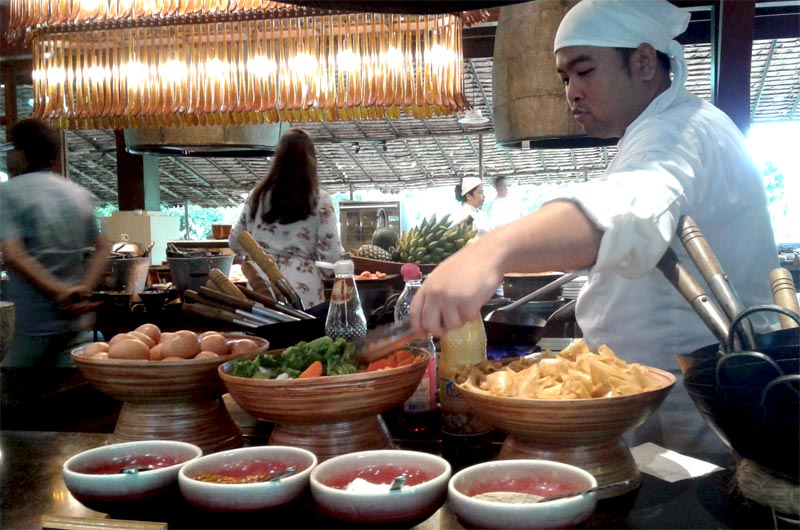
Tasty pan-fried or soup noodles, bacon and eggs cooked-to-order. Rice porridge accompanied by assorted condiments such as, fried fish and squid, pickled vegetables, fermented tofu, and Thai sauces.
Kept in the cooler were the delicious home-style yogurts. Not-to-miss, the freshly squeezed juices and sliced fruits.
Related: Terraces Restaurant: Each Bite Is a Treat for the Discerning Epicurean
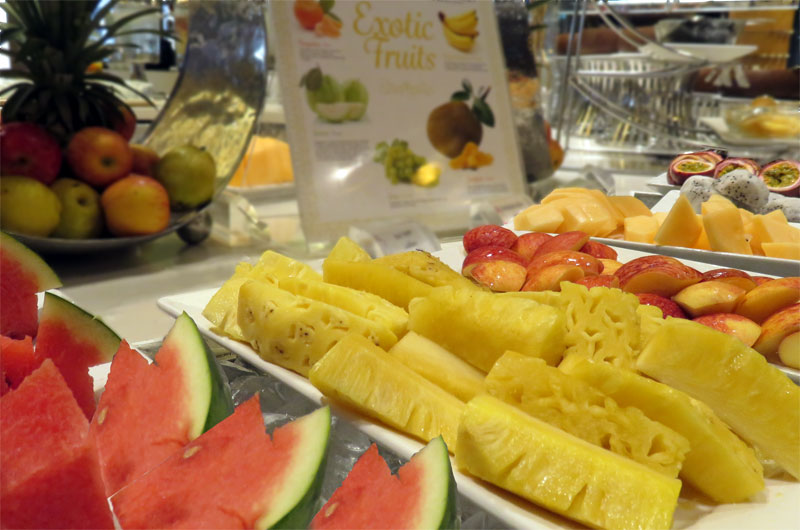
On the counters were also the buttery croissants, crusty baguettes, assorted cured meats with cheeses, and other delights. The sizeable buffet catered to virtually every diet type, from Thai, Chinese to European and American.
Cooking Thai at the Rim Tai Kitchen Cooking Academy
After a morning of indulgence, I moseyed over to the demonstration pavilion for the bespoke epicurean experience.
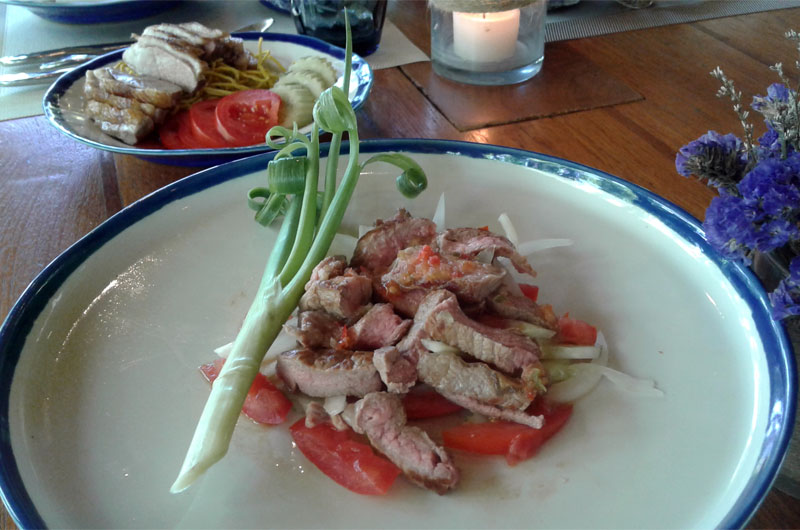
“Today, you learn to make four dishes. Thai green curry, Thai spicy beef salad, roast duck coffee sauce and spicy chicken soup with coconut milk,” said Tagoporn.
She was among the few privileged students to learn Thai cooking under the tutelage of Princess Maha Chakri Sirindhorn, at the private ladies cooking college operated by the Thai Grand Palace.
Lessons cater to different levels from novice to connoisseur
There were four participants in the cooking class, ranging from novice to serious foodies. We worked in teams of two. Most ingredients were prepared in advance by the kitchen, so prep work was minimal. Thai food uses the freshest ingredients.
Related: Why Thanin Market Is for Gourmet Window Shoppers and Serious Foodies
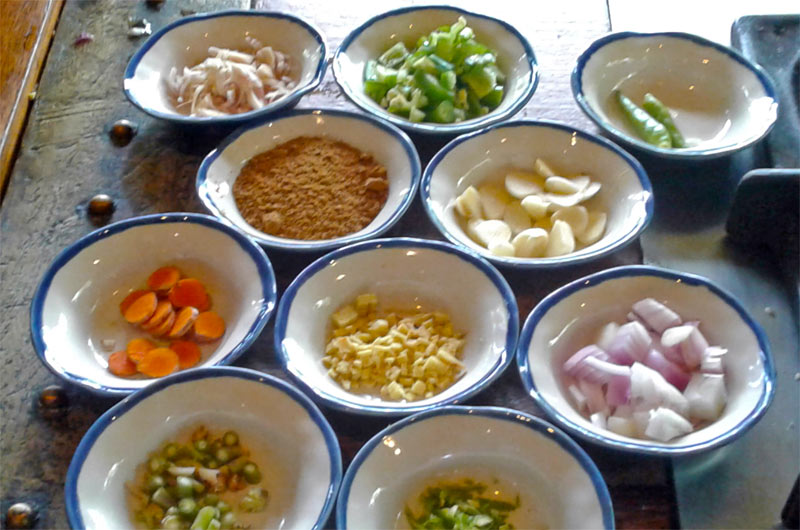
Tagoporn explained the various regional Thai cuisines and the basics of Thai sweet, salty, sour and hot balance. She demonstrated how each recipe is made using different kitchen tools including the traditional mortar and pestle.
The trick to not tire the hand, she said. The correct way is to use proper wrist motion, relax your joints, and pound with a down-and-out motion.
Make sure ingredients are dry to avoid splattering. Pound each ingredient separately, starting with chillis. Next, fibrous herbs such as lemon grass, cilantro root, galangal, kaffir lime leaves. Soft items like onion and garlic come last.
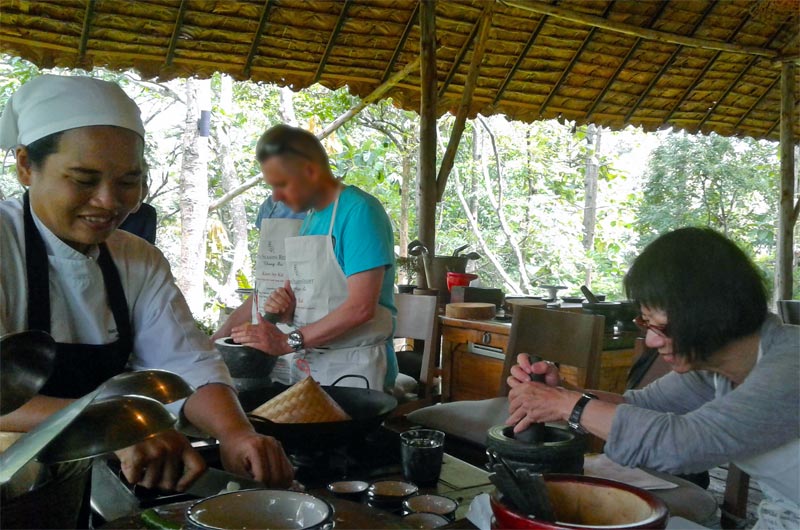
Each participant was assigned a cooking station – to create the four-course lunch to share and enjoy with wines.
The four-hour interactive cooking class was a fun session of cultural exchange on food!
We left the class with tasty recipes to create at home, improved culinary knowledge, and a happy belly.
Related: Terraces Restaurant: Each Bite Is a Treat for the Discerning Epicurean
Rim Tai Kitchen also offers the Chef’s Table program. On this interactive epicurean journey, the Thai chief instructor showcases eight regional dishes exquisitely prepared in a rustic setting.
Guests dine around a communal table and get to connect with other epicureans. Price starts at around US$90 per person including tax.
Diners can opt for a taste of Southern Thailand wines, beers and handcrafted Mae Rim spirits for an additional cost.
Garden Flourishing with Fresh Ingredients
After the class, Tagoporn gave a tour of the small garden near the kitchen. She pointed out vegetables and herbs used in Thai cuisine. Thriving in the garden were different species of eggplants and chillis.
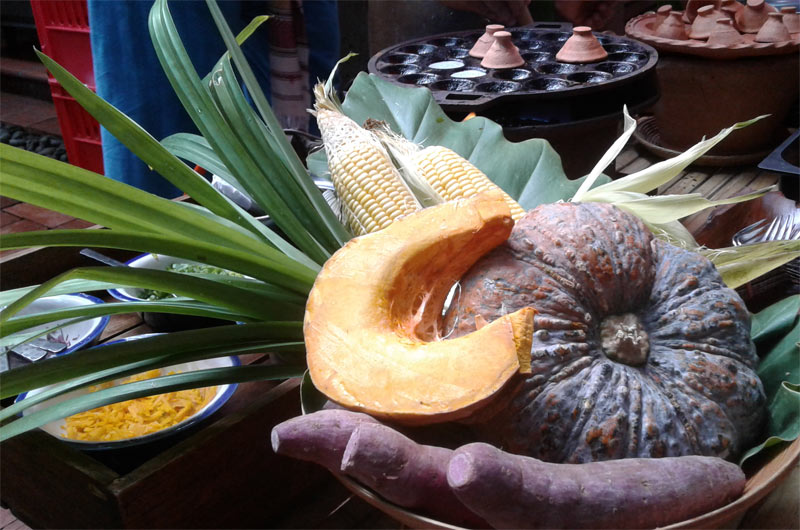
There were also the screw pine leaves, chives, galangal, Vietnamese mint and kaffir lime tree. The pointy Thai sawtooth coriander serves as a garnish for tom yum soup.
Lemongrass bushes thrive alongside betel leaves used for miang kham. There were three types of basils: hot basil for stir-fry pork, sweet basil for green curry and fragrant lemon basil.

The intense blue-coloured flowers of the butterfly pea plant (also known as Asian pigeonwings) are brewed into tea to improve health.
Related: Four Seasons Resort Chiang Mai: Enriching Culinary Escape in Unpretentious Luxury





